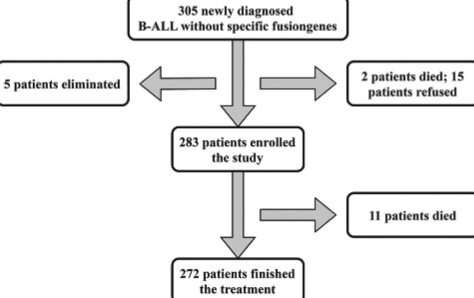Outcome and risk factors for B-cell acute lymphoblastic leukemia in children without specific fusion genes

Acute lymphoblastic leukemia is the most common cancer in children, and B-cell precursor acute lymphoblastic leukemia accounts for approximately 75%–80% of newly diagnosed pediatric ALL cases. Previous studies have shown that fusion genes are the most important cause of pediatric B-cell acute lymphoblastic leukemia, and the prognosis of different fusion genes differs significantly.
Specific fusion genes play an important role as risk factors for strategic treatment. However, not all patients are positive for fusion genes. Therefore, authors from Chongqing Medical University, China, tried to evaluate the outcomes and risk factors for pediatric B-cell acute lymphoblastic leukemia without specific fusion genes in three Chinese institutes, and they we used next-generation sequencing in relapsed patients to try to reveal more risk gene mutations in pediatric B-cell acute lymphoblastic leukemia.
The authors of this study retrospectively analyzed clinical and laboratory findings, treatment response, and outcomes in 283 patients with B-cell acute lymphoblastic leukemia. Traditional parameters and treatment response at different time points were evaluated to classify risk groups and adjust treatment strategy. Their results are published in the Bosnian Journal of Basic Medical Sciences.
Treatment-related mortality was observed in 11 (3.89%) patients, 49 (17.31%) patients relapsed, and the prospective 10-year event-free survival rate was 78.2±2.5%; adverse and unreported genetic abnormalities were detected in 25 patients with bone marrow relapse. Univariate analysis showed that a good bone marrow smear response at time 2 and minimal residual disease at time 2 and 3 were strongly associated with prolonged prospective event-free survival. Multivariable analysis of the results and hazard ratios showed that a positive value for minimal residual disease was an important risk factor.
Based on the study, the authors believe that traditional risk factors and poor response to prednisone can be overcome by modified chemotherapy and that hematologists should focus on monitoring minimal residual disease. The authors also believe that next-generation sequencing will be helpful in detecting more risk-related molecular abnormalities, especially in the "patients with negative fusion genes."
More information:
Pinli Zou et al, The long-term outcome and risk factors for precursor B cell acute lymphoblastic leukemia without specific fusion genes in Chinese children: experiences from multiple centers, Bosnian Journal of Basic Medical Sciences (2021). DOI: 10.17305/bjbms.2021.5879
Provided by Association of Basic Medical Sciences of FBIH